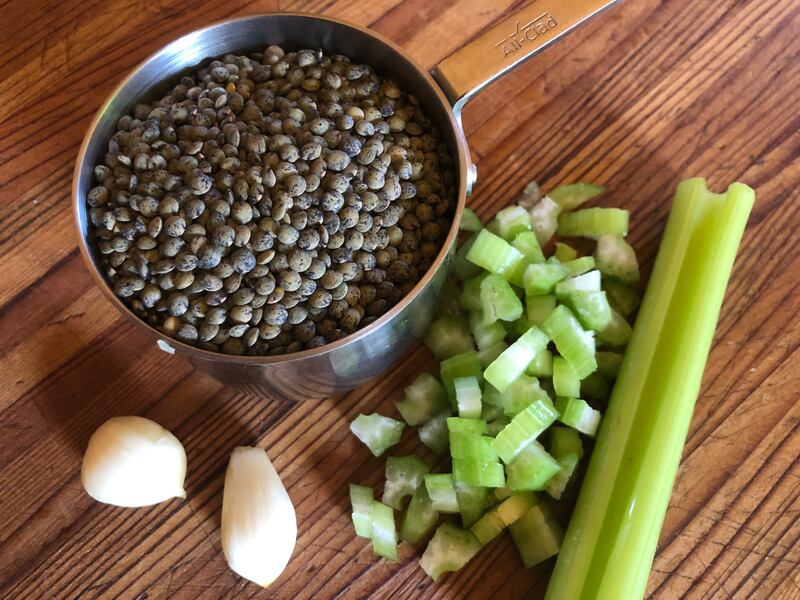Jim Dixon wrote about food for WW for more than 20 years, but these days most of his time is spent at his olive oil-focused specialty food business Wellspent Market. Jim’s always loved to eat, and he encourages his customers to cook by sending them recipes every week through his newsletter. We’re happy to have him back creating some special dishes just for WW readers.
Mauro was a grizzled farmer we met in the Umbrian hill town of Castelluccio, home of Italy’s best lentils. My wife, Judith, and I had driven up into the mountains of central Italy in search of the famous lenticchie di Castelluccio, but it was late October 2001, the vast lentil fields in the shadows of the Sibillini Mountains were dusted with snow, and most of the tiny village was shuttered for the winter. A local directed us to the only open bar, and when we walked in, the handful of customers watching Italian tenor Andrea Bocelli sing “Ave Maria” at ground zero in New York on the bar’s TV turned their heads in unison and stared at us.
We smiled and offered a few buongiornos, and everyone went back to watching their famous countryman sing. The traditional short menu offered grilled lamb, sausages, pasta with lamb ragù, and, of course, lentils. We ordered a couple of bowls, and just as I was about to sprinkle some grated Parmigiano on mine, I glanced over at the next table and saw Mauro wagging his finger, shaking his head, saying, “Non formaggio.”
I stopped, he smiled, and with my limited Italian, I heard him tell us that the lentils he and his friends grow in Castelluccio are too delicately flavored for the assertive cheese.
“Solo aglio, olio, sedano, sale, e acqua,” Mauro said and repeated, “non formaggio.”
While it’s been a few years since I’ve had those speckled, brown-and-green lenticchie from the mountains of Umbria, I still honor Mauro’s advice and cook my lentils with just garlic, olive oil, celery, salt and water.
Humans have been eating lentils for thousands of years, and different cultures grow and eat them differently. Red, yellow and white lentils, popular in South Asia, have their seed hulls removed so they cook quickly and break down into a porridgelike consistency sometimes called dal (which is what lentils are called in India). Lentils that haven’t been hulled will retain their shape after cooking.
Umbrian lentils from Castelluccio are hard to find, so look for the smaller French-style green lentils, called du Puy if grown in France, the brown Spanish-style called Pardina, or speckled brown lentils grown in Italy.

Lenticchie al Mauro
2 cloves garlic, minced
1/4 cup extra virgin olive oil
1 small stalk celery, diced (about 1/2 cup)
1/2 teaspoon kosher salt
1 cup small green or brown lentils
2 1/2 cups water
Sauté the garlic and celery in olive oil over medium-low heat for a couple of minutes, being careful not to let the garlic brown. Add the lentils, salt and water. Bring to a gentle boil, reduce heat, and simmer for 20 to 30 minutes or until lentils are tender. Taste, adjust salt, and drizzle with more extra virgin olive oil to serve.
